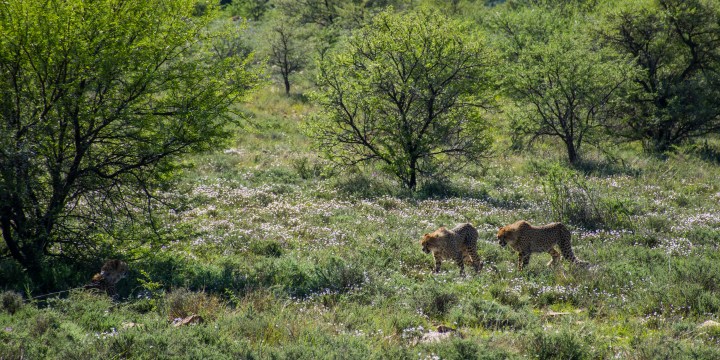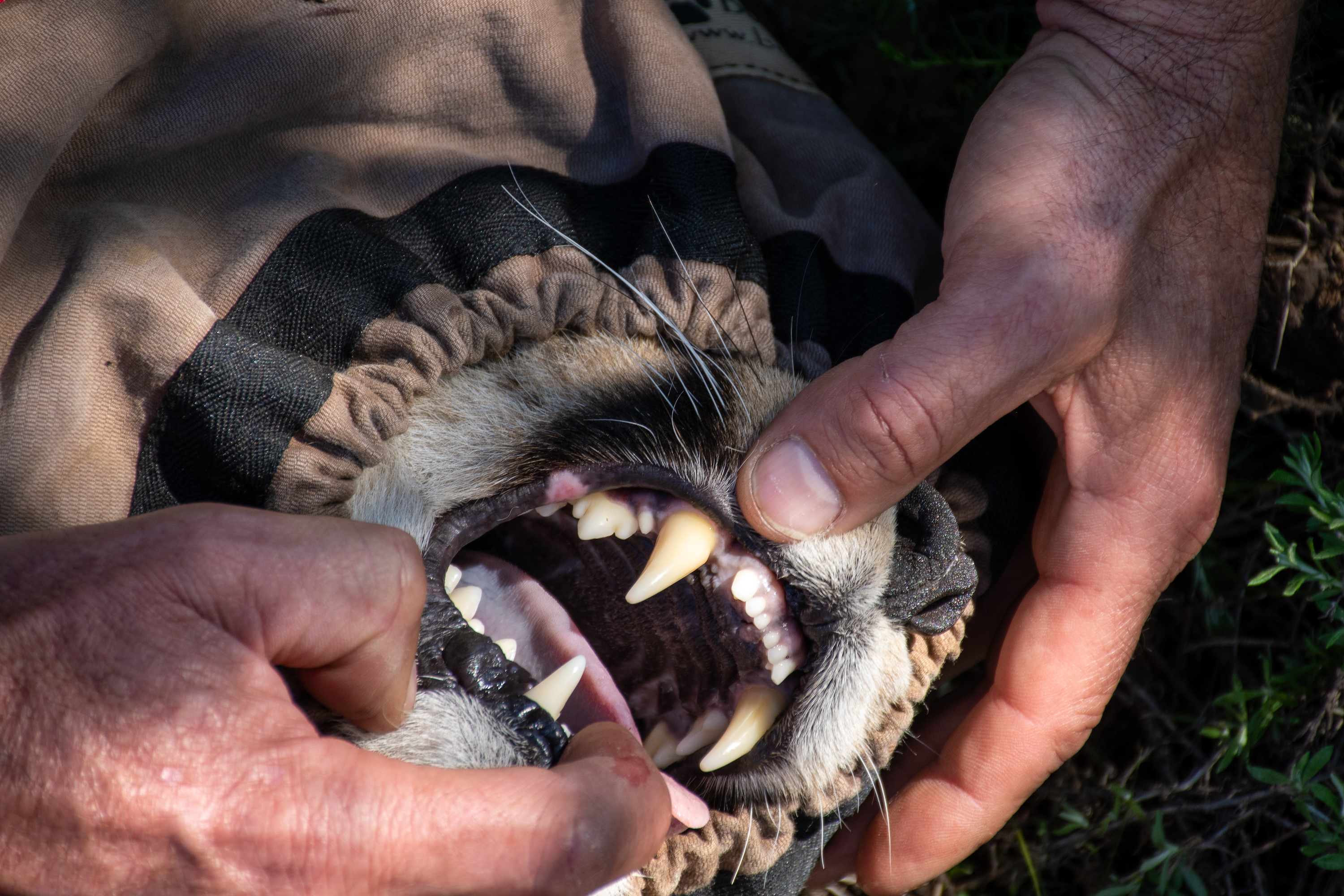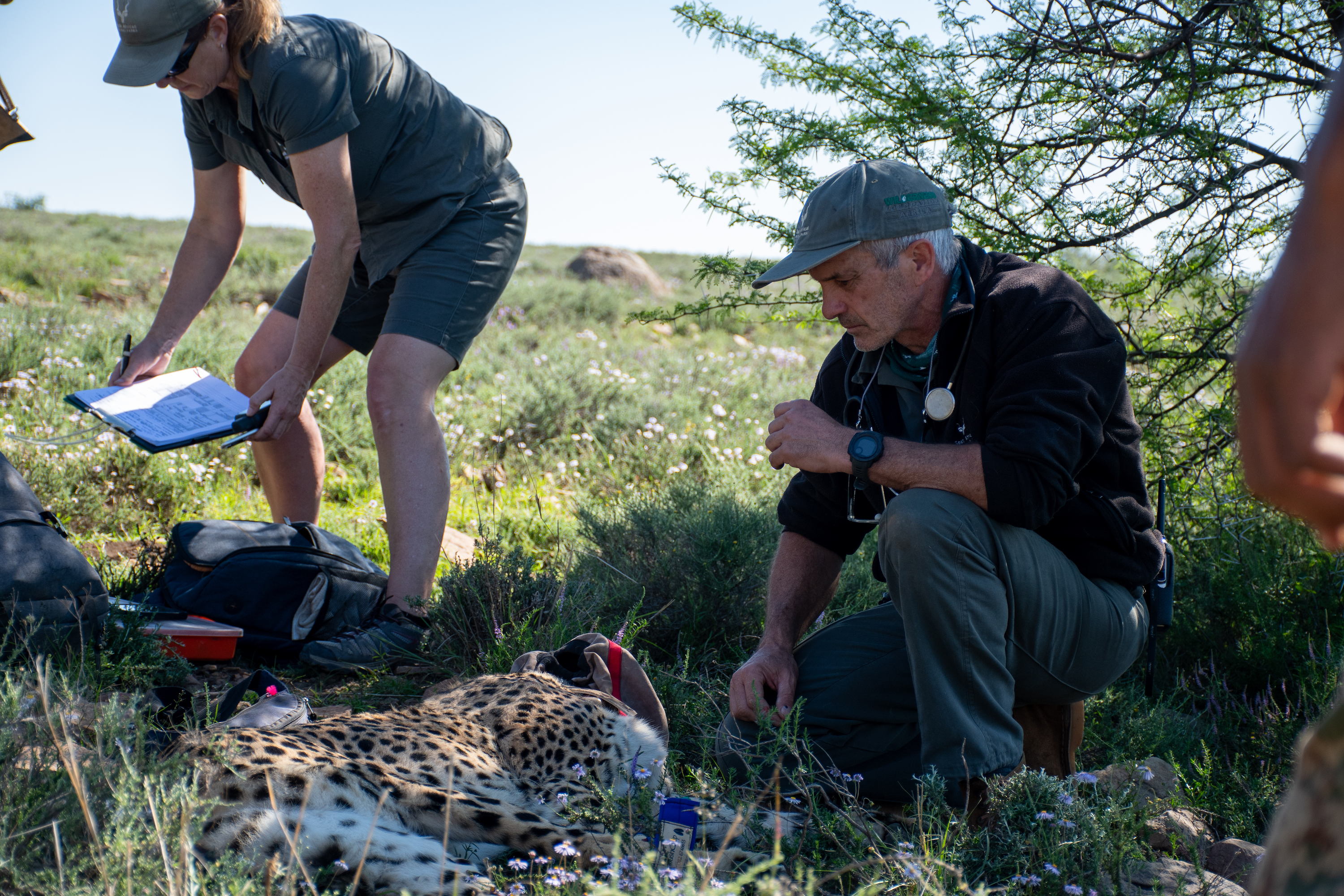METAPOPULATIONS
Protecting cheetahs, island style — how Eastern Cape park plays vital role in mimicking natural migration

Once absent for more than a century, the iconic predator, the cheetah, have returned to their historical grounds, albeit within a carefully managed ecosystem that aims to mimic natural migration, highlighting the need to expand our protected areas and create corridors between them.
‘Historically, in any sort of natural landscape, animals would have been able to move across that landscape freely, from one area to another,” said Dr David Zimmermann, SANParks veterinarian.
But over time humans’ influence on the environment started to seep into the natural landscape, he explained – hunting and using animals, habitat loss through development of agriculture, roads and buildings that either extirpated animals from their natural habitat, or blocked their path to migration.
“And so now, what you’ve got are smaller protected areas, which are actually just little islands within the bigger landscape.”
Zimmermann was speaking to Daily Maverick from the Mountain Zebra National Park, just outside Cradock in the Eastern Cape, where more than 130 years ago cheetahs resided, and were able to roam freely across the plains of the Karoo.
Today, cheetah populations are confined to just 9% of their historical distributional range, and are classified as vulnerable on the IUCN’s Red List.

SANParks veterinarian, Dr David Zimmermann, about to inject the antidote to bring the cheetah out of sedation after her collar was replaced. (Photo: Julia Evans)

A SANParks vet checks the health of a cheetah’s teeth while under sedation. At four and a half years old, this cat’s teeth are still in good condition. (Photo: Julia Evans)
While South Africa is the only country worldwide that has seen considerable growth in wild cheetah numbers, with its population increasing from an estimated 400 individuals in 1965 to between 1,100 and 1,700 now, globally cheetahs are in decline, decreasing by 600 in the past eight years.
As part of South African National Parks’ (SANParks) policy to reintroduce wildlife species to areas where hunting or habitat loss forced them to local extinction, in 2007 the Mountain Zebra National Park reintroduced two male and two female cheetahs into the park after being absent for more than a century.
But the absence of competing predators initially led to a rapid increase in cheetah numbers, causing the herbivore populations (such as the mountain reebok), originally naive to predation, to crash.
“Before we knew it we had an unsustainable population of cheetahs,” said Zimmermann.
Along with this, there was a great need to prevent inbreeding and genetic stasis of this growing population in a confined and protected area.
“These small parks, it’s not a natural system,” explained Zimmermann. “It’s fenced, the animals can’t migrate, they can’t run away from predation. So, by managing the predators we get to try to manage that process.”
He said that, in the natural system herbivores would be able to escape predation, leading to animals moving across the landscape, and predator populations wouldn’t become as big.
“So we’ve got to manage these populations and putting collars on gives us a handle on our predator populations.”
Along with introducing lions into the park – so the cheetah would have a competing predator – in 2010 and 2011 a total of 13 cheetahs that had been born in the park were relocated to other reserves.

SANParks veterinarian, Dr David Zimmermann, checks the vitals of CJ the cheetah during the fitting of a new tracking collar while she’s sedated. After wild cheetahs have been darted, a blindfold is put on to protect their eyes. (Photo: Julia Evans)
Allison Muller, a double doctorate candidate in conservation ecology at Stellenbosch University and Groningen University, said tracking collars are a vital tool in wildlife conservation, offering essential insights into the animals’ space use, activity patterns and potential threats.
“These collars assist reserve management teams in controlling and managing populations, act as early warning systems for escaped animals, and mitigate potential human-wildlife conflicts.”
The park is an important contributor to the Endangered Wildlife Trust’s Cheetah Metapopulation Project (now known as the Cheetah Range Expansion Project) which was launched in 2011 and aims to increase cheetah numbers, reduce cheetah-human conflict and create genetically diverse cheetah populations.
Zimmermann explained that metapopulation management comes from island biology.
“If can imagine in the ocean there’s a population of birds on one island and a population of birds on another, the only way they can link is to fly from one island to the next,” he said, adding that these fragmented “metapopulations” are separated, but the overall population is still connected.

SANParks field guide Andrew Frolick uses a radio telemetry set to pick up the VHF (very high frequency) transmitter from a cheetah’s collar in Mountain Zebra National Park. (Photo: Julia Evans)
But the problem is our landscape, we are managing protected areas – they’re not connected anymore – because of us humans. We’ve created that fragment, and animals can’t move across the landscape from one park to the next.
“So, we mimic that, by moving animals from this park to the next.”
Overall, the Mountain Zebra National Park has contributed 35 cheetahs to the greater metapopulation, including to important range expansion projects within southern Africa, with cheetahs going as far as Malawi and Zambia.
SANParks said removing and bringing in cheetahs to the Mountain Zebra National Park is done strategically with consultation among the Endangered Wildlife Trust, park management and SANParks’ ecologists. This ensures genetic and demographic integrity of the respective populations are maintained, thus ensuring the conservation value of this population.
Management costs money
Today, the park is home to eight cheetahs – four adults and four cubs who are 10 months old. CJ, the mother to the cubs, needed her tracking collar to be changed because the battery was about to die. Thanks to Martine and Anthony Armstrong, the park was able to fund a new one.
“To manage populations, to manage animals, costs money,” noted Zimmermann, adding that while collaring the cats is mainly for management purposes, it does have the added benefit of generating more tourism and revenue, which can go back into conservation.
The Mountain Zebra National Park is the only national park in South Africa that offers cheetah tracking as a tourist activity – where tourists can get up to 40m from one of the four adults that are tracked in the park. Park manager Evans Mkansi said they rotate which cheetah they go to see so the animals are not seeing humans every day.
Muller, whose doctorate research is focused on free-roaming cheetahs in southern Africa, said that “this interaction builds public support for these practices and helps tourists appreciate the delicate balance of the ecosystems they observe, making their experience more meaningful and impactful”.
Muller added that while the benefits of collaring are significant, “it’s absolutely vital that this practice is carried out ethically and correctly to ensure the welfare of the animals always comes first”.
Vuyani Dial, the hospitality services manager for the park, said that through activities alone – including game drives, guided walks, bird watching, cheetah tracking – the park brought in R1.2-million in 2023/24 financial year. Most of this was from cheetah tracking.
“The cheetah tracking, we always say it’s a cash cow,” said Dial, smiling. Every day there’s a booking for cheetah tracking.
SANParks is subsidised by the government (15% to 20%) but gets most of its revenue from bookings. As Zimmermann said, conservation is expensive, and while the four adult cats are collared – thanks in part to private donation – Mkansi said they currently don’t have the funds to collar the four cubs. Tracking collars can cost north of R40,000, depending on the technology.

Thanks to the conservation efforts of farmers in the area when Mountain Zebra National Park was first proclaimed in 1937, a small herd of the endangered Cape mountain zebra survived, providing the founder population of zebra, which the park is now known for (Photo: Julia Evans)

The tourist cottages in the Mountain Zebra National Park, about 12km outside Cradock in the Eastern Cape. (Photo: Julia Evans)
The Armstrongs told Daily Maverick that their family has always been passionate about wildlife, and avid SANParks fans since the early 1990s.
“The park is doing a fantastic job conserving South Africa’s biodiversity – the cheetah population in particular – and we wanted to do our bit to help preserve them for future generations,” they said.
“We first ‘met’ CJ’s mom Angela in 2018 and have eagerly followed the family’s story over the years. It’s been so great to hear all the success stories of these beautiful predators, and catch glimpses of some of them on our visits. We think CJ has made her mom Angela and father Mabula proud by successfully raising her first litter of four. We’re honoured and privileged to be a small part of this amazing story.”
Corridors of connectivity
Another important step in managing ecosystems and populations is to expand protected areas, and to create corridors so animals can move between them.
The first UN State of the World’s Migratory Species report highlighted that less than 10% of protected land is presently connected and warned that isolated protected areas may still lead to genetic stasis.
Read more in Daily Maverick: World’s migratory species in free-fall but plans under way to mitigate human harm
South Africa, along with 195 other nations party to the UN’s Convention on Biological Diversity treaty, committed to protect 30% of our land and seas by 2030. Right now, only 9.8% is considered formally protected (like national parks).
Read more in Daily Maverick: SA needs to preserve the equivalent of Kruger Park each year to meet UN goals
Along with expanding our protected areas – which would mean the Kruger National Park and a bit every year to hit the UN target – we need to link these areas with corridors.
“It’s not clear cut,” said Zimmermann, explaining that it’s not just fences blocking animals’ paths, but roads they wouldn’t want to cross and mountain ranges that they wouldn’t have historically crossed. “But it’s important to try and create those corridors.”
Rhian Berning, CEO of the Eden to Addo Corridor Initiative, highlighted that in South Africa we have some great corridor projects under way – the Tankwa Karoo to Cederberg Wilderness corridor, the Camdeboo to Mountain Zebra corridor, the Addo to Great Fish River corridor and the Eden to Addo corridor.
“Just for a moment cast your mind back to imagine the phenomenal migrations that must have coursed through our country – elephant, springbok, zebra, cheetah – all moving in their thousands,” she said.
“And while we can’t necessarily restore those major migrations, we can enable connectivity again, between protected areas and areas of ecological significance, nature corridors that allow essential life-giving processes to flow again.” DM
















The EWT is doing a great job with their Cheetah metapopulation project. They are doing the same for painted wolves (wild dogs) and compiling a database for wild lions. Corridors would help the situation greatly but there are numerous problems. The most obvious is that fences would have to be taken down. However, between the Camdeboo National Park and Mountain Zebra there is a variety of land use including sheep farms, hunting farms and game reserves. Sheep farmers and hunters certainly don’t want mega predators on their properties even if they are just passing through. In addition, the commercial reserves such as Samara which has also had a very successful cheetah breeding programme would be loath to see their expensively introduced elephants, lions and rhinos migrate from their properties thus depriving their guests of Big 5 experiences. Having protected areas is one thing but having a truly open corridor is another.